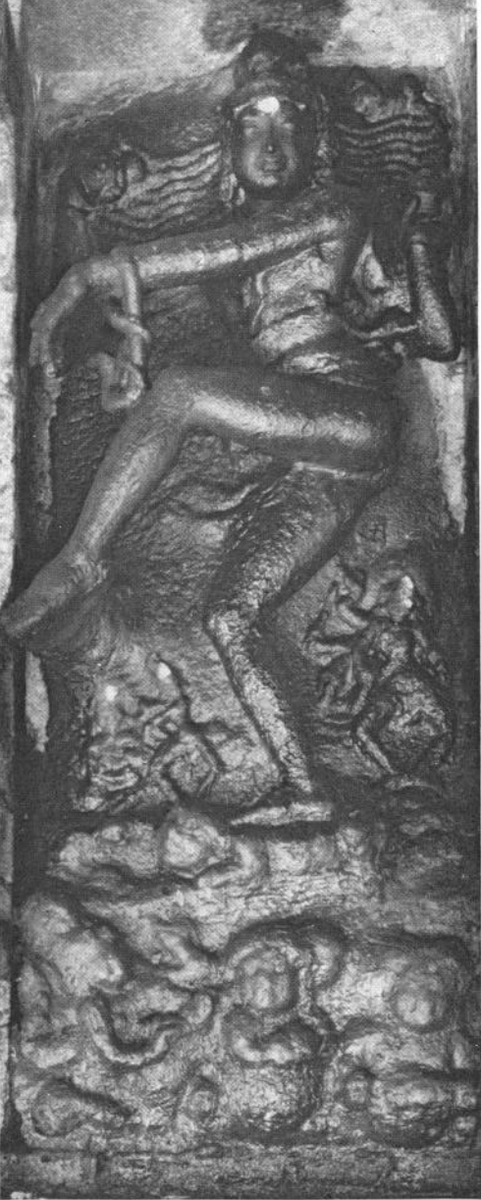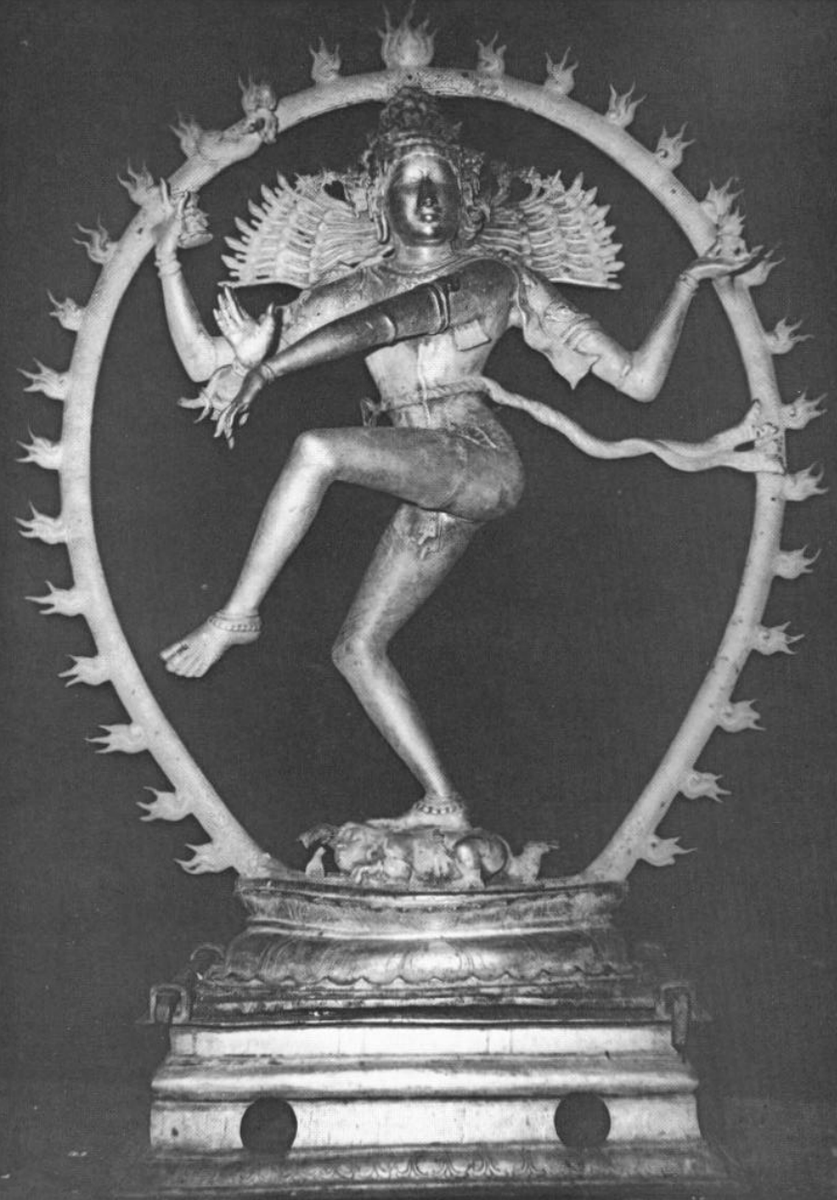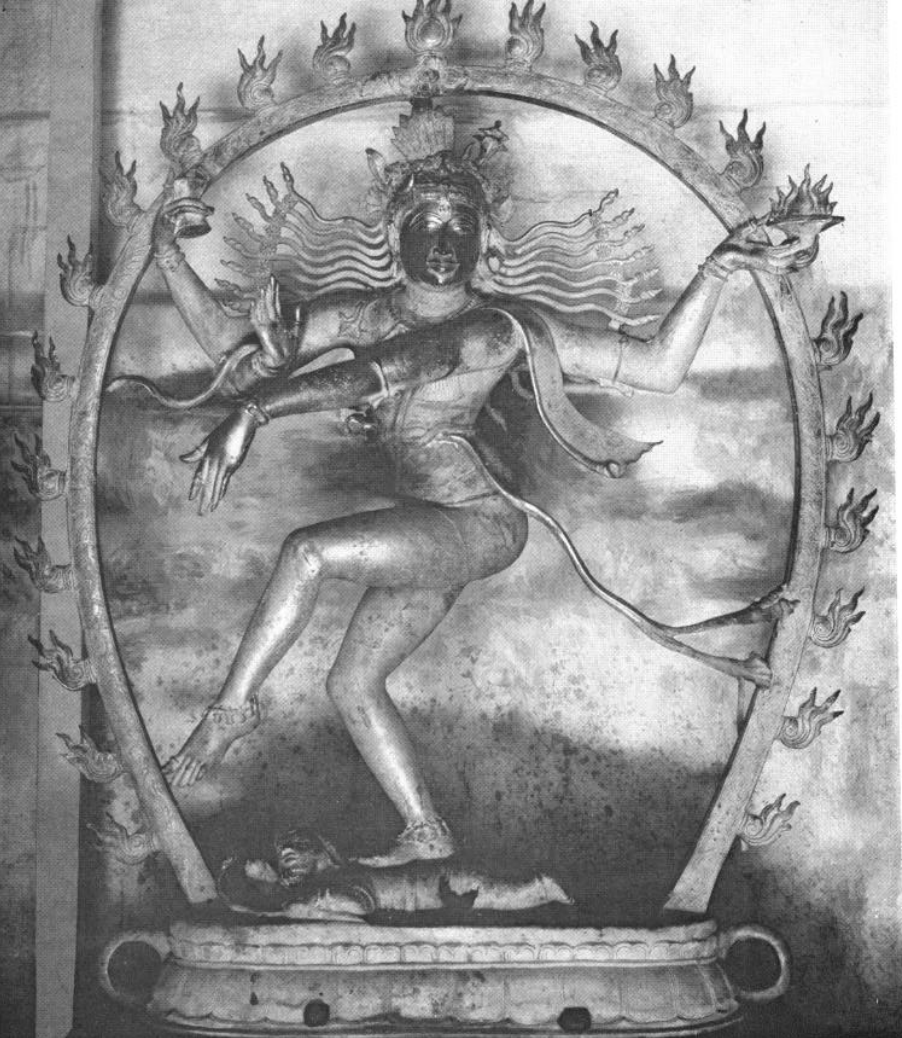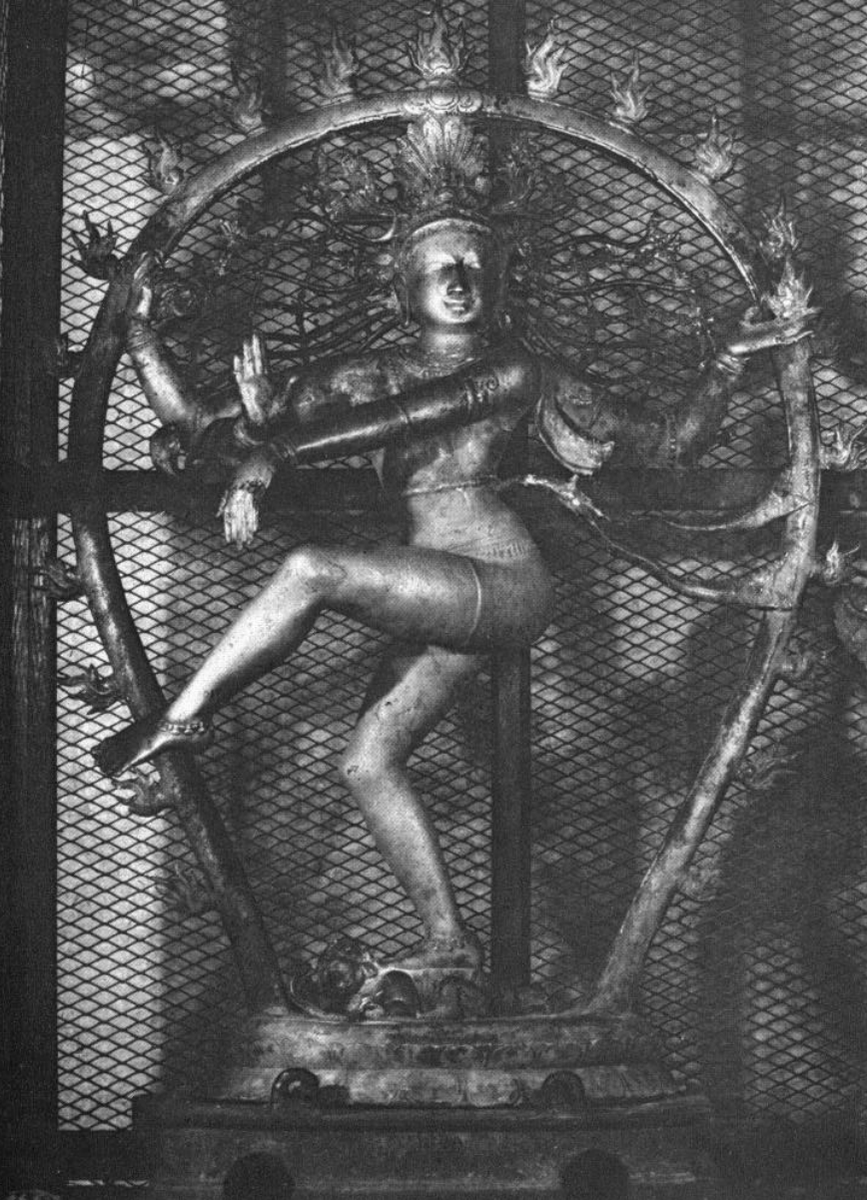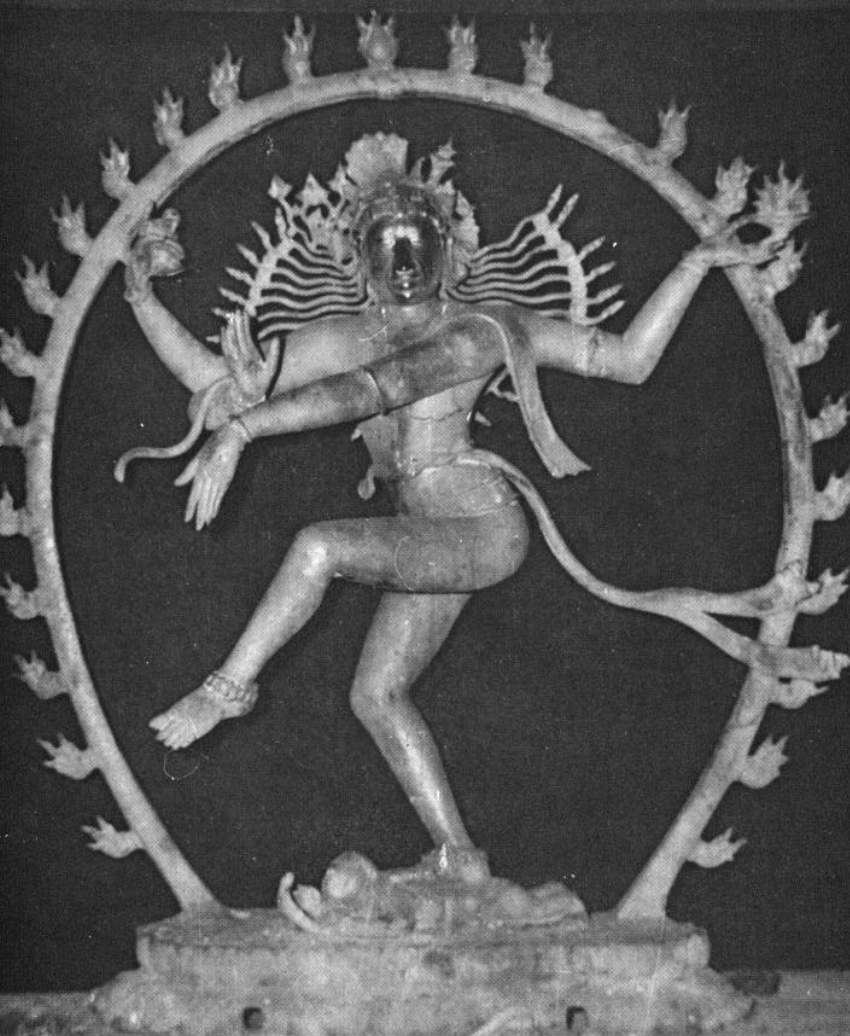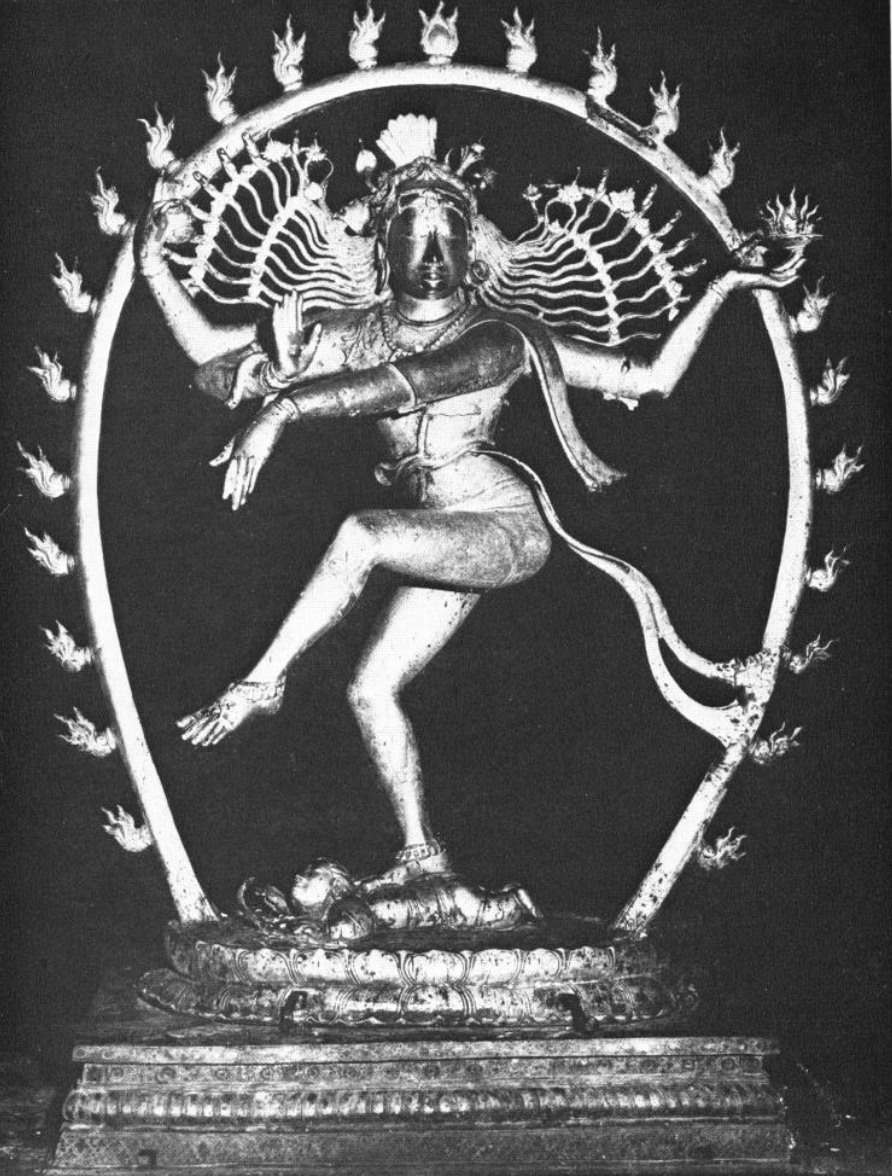Today this era is largely remembered for Raja-Raja Chola
But we forget Sembiyan Mahadevi - Raja Raja& #39;s grandmother
In some ways the Ahalyabai Holkar of her day - a legendary queen whose piety and patronage are forgotten today
But we forget Sembiyan Mahadevi - Raja Raja& #39;s grandmother
In some ways the Ahalyabai Holkar of her day - a legendary queen whose piety and patronage are forgotten today
Mahadevi not just built several temples but also refurbished several old "brick" temples by rendering them in stone!
But for these refurbishments, many of the ancient brick temples (possibly pre-Chola) would not have survived into our times
But for these refurbishments, many of the ancient brick temples (possibly pre-Chola) would not have survived into our times
It was also likely during her epoch that the practice of rendering Nataraja in bronze picked up
Earlier Pallava renderings as we just saw are in stone.
(though there might be some bronzes from Pallava period I am unaware of)
Earlier Pallava renderings as we just saw are in stone.
(though there might be some bronzes from Pallava period I am unaware of)
An early "classic" Nataraja from the Sembiyan Mahadevi phase is the temple of "Uma Maheshwara" at Konerirajapuram
This is a village today in the Mayiladuthurai (Skt : Mayavaram) near Kumbakonam
This is a village today in the Mayiladuthurai (Skt : Mayavaram) near Kumbakonam
This is the classic "ananda-tandava" pose
With the only difference being -
The cobra descends not from the right forearm but the left
Also the Goddess Ganga is shown in the locks not on the deity& #39;s right but the left
With the only difference being -
The cobra descends not from the right forearm but the left
Also the Goddess Ganga is shown in the locks not on the deity& #39;s right but the left
Another temple built / refurbished by Sembiyan Mahadevi in late 10th century is the Agastyeshwara temple at Anangur (near Namakkal / Trichy)
Built by Mahadevi just before 979 CE
Interestingly in this Nataraja there is no Ganga in the locks!
Built by Mahadevi just before 979 CE
Interestingly in this Nataraja there is no Ganga in the locks!
Even in the Thirukoteeswarar Temple (Tanjore district) at Tirukkodikaval there is no Ganga in the Nataraja depiction, but it has all the other features associated with the classical Nataraja
This is also a temple built by Sembiyan Mahadevi (980 CE)
This is also a temple built by Sembiyan Mahadevi (980 CE)
Some other temples built by Sembiyan Mahadevi in that phase (all of which have Nataraja)
(also all these Natarajas have Ganga in the locks)
Kailasanathar temple at Nagapattinam (981 CE)
Gangajatadhara temple at Govindaputtur (982CE)
Apatsahyeshwara temple at Aduturai (985 CE)
(also all these Natarajas have Ganga in the locks)
Kailasanathar temple at Nagapattinam (981 CE)
Gangajatadhara temple at Govindaputtur (982CE)
Apatsahyeshwara temple at Aduturai (985 CE)
During the reign of Raja-Raja Chola, Sembiyan Mahadevi continued to patronze construction of temples -
Some Nataraja temples from this phase
Siddhanathaswami temple, Thirunaraiyur (986 CE)
Achaleswara shrine, Thiruvarur (991 CE)
Uktavedishwara temple, Kuttalam (991 CE)
Some Nataraja temples from this phase
Siddhanathaswami temple, Thirunaraiyur (986 CE)
Achaleswara shrine, Thiruvarur (991 CE)
Uktavedishwara temple, Kuttalam (991 CE)
Some of these Natarajas from this late Sembiyan Mahadevi phase are shared below -
Achhalapuram (990 CE)
Achhalapuram (990 CE)
So far we have not discussed the most famous Nataraja shrine of all - the great Thillai Nataraja temple of Chidambaram
Even this major shrine likely attained preeminence in the Sembiyan Mahadevi phase
But since has overtaken the other Nataraja shrines in the popular imagination
Even this major shrine likely attained preeminence in the Sembiyan Mahadevi phase
But since has overtaken the other Nataraja shrines in the popular imagination
Will conclude by linking to this fine talk by Aldous Huxley who extols the symbol of Nataraja
And on why we ought to celebrate Him https://www.youtube.com/watch?v=32oo0oyLUdE">https://www.youtube.com/watch...
And on why we ought to celebrate Him https://www.youtube.com/watch?v=32oo0oyLUdE">https://www.youtube.com/watch...
In Huxley& #39;s words - there is no comparable symbol in Western art
"We don’t have anything that approaches the symbolism of this work of art, which is both cosmic and psychological."
"We don’t have anything that approaches the symbolism of this work of art, which is both cosmic and psychological."
References for the thread -
1. Mortimer Wheeler Lecture by Douglas Barrett in 1976 (British Academy) (many pictures sourced from here)
https://www.thebritishacademy.ac.uk/pubs/proc/files/62p181.pdf
2.">https://www.thebritishacademy.ac.uk/pubs/proc... On the origins of Nataraja - http://www.mahavidya.ca/2020/01/02/siva-nataraja-bronzes-origins/">https://www.mahavidya.ca/2020/01/0...
1. Mortimer Wheeler Lecture by Douglas Barrett in 1976 (British Academy) (many pictures sourced from here)
https://www.thebritishacademy.ac.uk/pubs/proc/files/62p181.pdf
2.">https://www.thebritishacademy.ac.uk/pubs/proc... On the origins of Nataraja - http://www.mahavidya.ca/2020/01/02/siva-nataraja-bronzes-origins/">https://www.mahavidya.ca/2020/01/0...

 Read on Twitter
Read on Twitter